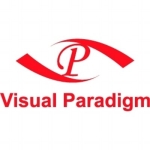What is our primary use case?
We are using the product as an OAM that we have included in our software product. We are offering a private cloud solution and we sell it and deploy it to our customers.
We are using it to create a low-code solution for strategic planning and performance management in order to automate the management processes such as planning, performance management, governance processes, and business process management as a whole.
What is most valuable?
We are using the BPMN engine of Camunda; we are not using the user interface. We are using just the engine, the back end of this. For us, it is working quite well.
The stability of the solution is quite good.
Technical support is good for getting alerts about bugs.
What needs improvement?
The form builder that will be utilized in the system and the data monitor both need improvement at this time. I want to exchange the data between the activity and UI basis. Currently, they are using a JSON file, which needs to be improved. We need something that can be used as a user interface and the user can make the data binding and exchange data between the activities.
This is what we did ourselves. We had the engine itself and we created a data monitor and formed it on top of it. This is what is missing in the system.
The initial setup can be complex for business users.
There occasionally be some bugs in the solution.
The solution needs to offer more languages such as Chinese, Arabic, Hebrew, et cetera.
What do I think about the stability of the solution?
The system is stable. This is why we selected it. Based on other products, we've found the most appropriate results coming out from the Camunda BPM engine. It's very good.
There are occasionally a few bugs, however, we are quite capable of dealing with them.
What do I think about the scalability of the solution?
Since we are using Camunda as a core solution, a core engine of our system, we are going to continue using it. I'm not willing to change it down the line. There's no plan for us to change it and we are not thinking about changing it. It has all functionalities and we are using about 50% of the engine itself in terms of its capability. We will continue to invest in utilizing all Camunda functionalities in the BPM engine.
How are customer service and support?
In terms of technical support, we are using basic technical support as we are a technical organization. We are a software house. Our team is professional and they have experience in Java and private cloud technology. They are able to fix any issue.
That said, there are certain bugs in Camunda. They are publishing information about them from time to time. We study the tool very carefully. Support from Camunda doesn't mean too much to us actually, as, in our organization, we have about 380 employees, and the majority of them are Java developers. We take the basic support to track the bugs only.
How would you rate customer service and support?
Which solution did I use previously and why did I switch?
I also have some experience using Visio as business process management and ARIS as well as Bizagi.
We are partners of Software AG webMethods as an automation tool. We are using Mendix and OutSystems as a low-code solution. ARIS, webMethods, Mendix, and OutSystems are what we mainly use.
You cannot compare Camunda with ARIS since ARIS is only for our documentation, business process documentation. You cannot compare it with Camunda. It is a totally different scope. However, in comparison between Mendix, OutSystems, and webMethods, they are very expensive tools and ultimately provide the same functionality, yet they are not using a pure BPMN XML. Maybe transferring the workflow between those systems doesn't work. That said, the consistency between, for example, Bonitasoft and Camunda and Bizagi is a matter of import and export. Between other systems such as webMethods and OutSystems and Mendix, for example, in webMethods, they are only still using an enhanced BPM engine mainly, meaning that they are not using the pure or the standard BPM notation. The same applies to Mendix and OutSystems.
How was the initial setup?
The initial setup, for business users, is complex. If you compare it with cloud systems and Mendix, it is complicated. It has a very strong and very rigid back-end BPM engine and it's more trustworthy if XML files have been generated from Camunda. The quality of the XML file being generated from Camunda, the XML files of BPMN, is more trustworthy than other systems. That's why we selected it. This is the main reason that we selected it.
With the Camunda installer, the deployment of just the solution is pretty fast.
However, the automation process with the current functionality, meaning with the missing functionality of data monitor and data binding and with the lack of proper UI representation, it took us a year to develop those components to have a low-code solution on top of it.
Now, with our low-code solution on top, it will take us one to two days to have a visible process automated.
What about the implementation team?
We are an integrator and we are consultants in business process management, and we are developing a tool on top of it. Therefore, we help our clients to implement. However, when we originally installed Camunda, we handled the process ourselves. The way we do things now, we try to make it easier for clients.
What's my experience with pricing, setup cost, and licensing?
We are using a developer license. I can't speak to exactly how much we are paying, or exactly what license type that we are using. I'm not the technical lead or the solution delivery team. Therefore, I can't answer this question.
Which other solutions did I evaluate?
We did a lot of POCs on available products in the market, such as Bonitasoft, Camunda, Bizagi, so on. However, based on that POCs, we found that the best way to go forward in our solution in terms of the functionality and the accuracy of the XML files. If they could be generated by Camunda it can be more useful for us to adopt in our solution.
What other advice do I have?
We are users of the solution.
We are the latest version due to the fact that we are developing our own product based on Camunda. We are developing a solution based on Camunda. We are a heavy user of Camunda.
Camunda is not so popular in the market due to the UI (meaning the form builder, the way of developing the forms which would be attached to the process), and the data monitor (how to exchange the data between the activities).
A company would need to create an integration framework between Camunda and other systems. If they sold their offering with the UI and data monitor it would be the biggest automation tool ever.
For us, with our experience with using the tool, you need a good developer to be able to use the system effectively. Other than that there are no issues. For an organization that wants to adopt Camunda, they need to have the proper resources, and the proper training to use the system.
I'd rate the solution at an eight out of ten. There's a bug inside the BPMN monitor that knocks a few points off the rating. If the system is not saved, it will crash.
Which deployment model are you using for this solution?
Private Cloud
If public cloud, private cloud, or hybrid cloud, which cloud provider do you use?
Other
Disclosure: My company does not have a business relationship with this vendor other than being a customer.


















Check SpiffWorkflow.org
We're all about customer support and satisfaction!
We are an open-source, low-code process automation tool, developed on top of a Python visual workflow library.
You can e-mail me for more information:
elizabeth.cruz (at) sartography (dot) com